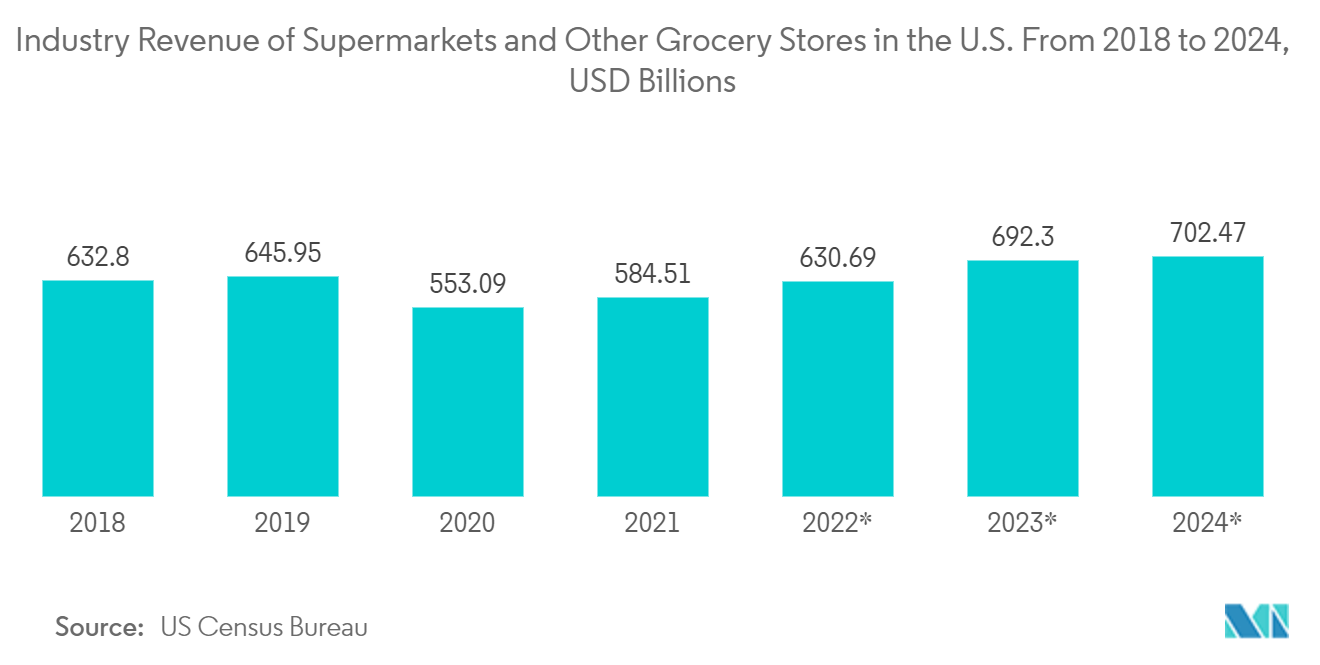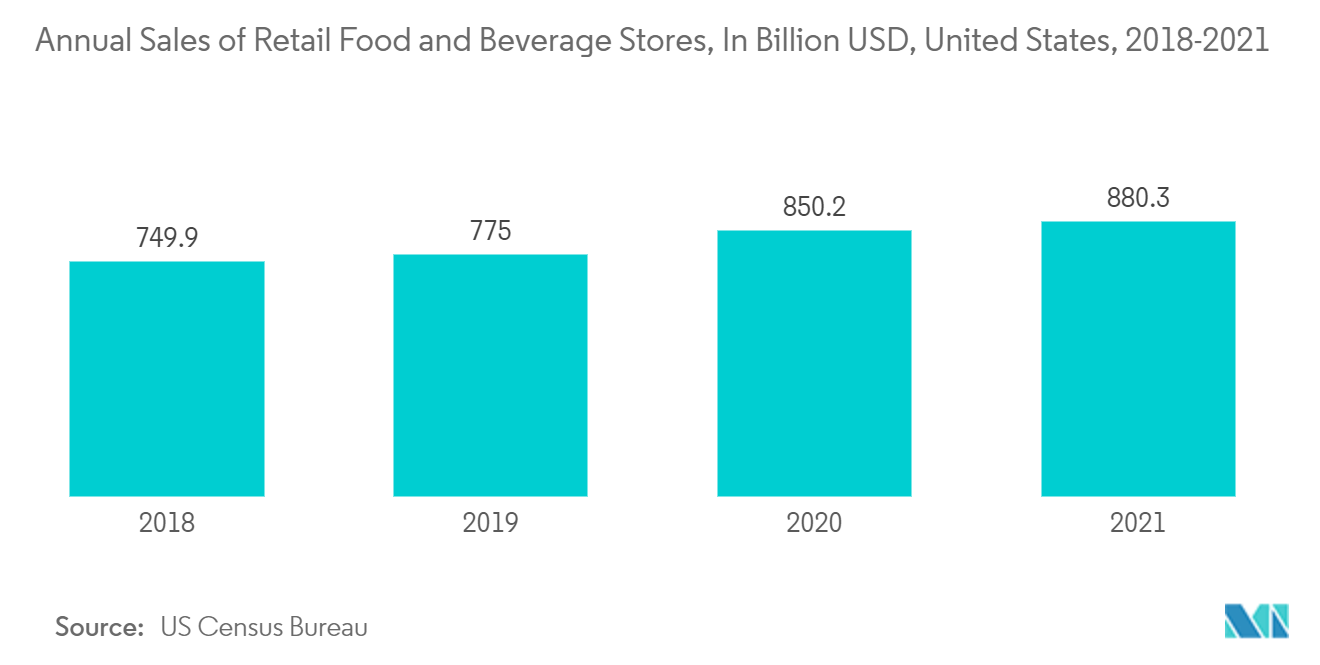Market Trends of North America Retail Automation Industry
Grocery Segment is expected grow at a higher pace.
- Self-checkout kiosks have been among the standard automation solutions increasingly being deployed in supermarkets. Also, grocery chain Kroger uses sensors and predictive analytics to forecast when more cashiers will be needed in its stores.
- The impact of COVID-19 on the region's retail industry resulted in Target, Taco Bell, Hy-Vee supermarkets, and Speedway convenience stores supporting Apple Pay, a contactless payment system enabling customers to quickly and securely pay in stores using their Apple Watch and iPhone.
- Also, when the first Amazon Go store was opened to the public, shoppers could walk into the store, grab whatever they liked, put it in bags, and walk out. The customers only required an app to shop. Amazon also plans to open more than 3,000 cashier-less stores in the future. The grocery sector has long tried to solve the friction of the checkout experience. From opening more registers to adopting self-service kiosks, no solutions have yet to satisfy the retailer and the customer entirely.
- Moreover, Zippin, an Amazon Go rival store in San Francisco, also has a cashier-less system that uses multiple sources of information, both cameras and shelf sensors, to triangulate and receive the correct information. Multiple retailers are anticipated to find checkout-free systems to be their answer to increased profits, including, but not limited to, fewer employees behind the register, reduction in theft by fraud, and new customer data.

United States is Expected to Hold a Major Market Share
- The retail automation market in the United States is anticipated to be driven by the growing adoption of automation technologies by major players such as Amazon and Walmart.
- Part of the adoption is significantly attributable to the changing consumer preferences. A Digimarc study reported that 88% of American adults prioritize faster checkout options over slower checkout speeds and long lines. Major regional retailers have focused on such complaints and adapted to a quick and easy checkout process.
- Retailers have implemented single or multiple payment solutions to decrease the time required to complete transactions. Also, by equipping sales associates with mobile point of sale (mPOS) devices, the time taken to process payments and the location of the payment processing eliminated the need for many traditional POS stations, thus, freeing up valuable real estate.
- For instance, Rebecca Minkoff's SoHo store deploys mPOS devices as self-checkout stations; customers who wish to own their shopping journey from start to finish can process transactions without the assistance of store personnel.
- Retailers in the region have recognized the need to incentivize digital payments and, thus, are offering more tangible benefits in the mind of the consumer, such as loyalty benefits. The technology has been better integrated with several apps and mobile commerce sites to create a more seamless experience.


